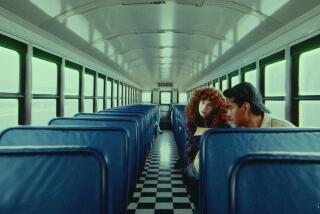The Cutting Edge: Computing / Technology / Innovation : IN DEVELOPMENT
- Share via
Virtual Instruments: Synthesized sound has always sounded--well, synthesized. That’s because synthesis chips were based on recordings of existing sounds, which do not take into account the range of different sounds a single instrument can make.
Enter waveguides, mathematical formulas that can model the way a violin string vibrates when it is bowed or the way a column of air vibrates in a flute. The result: virtual instruments. For heavy-metal fans, waveguides can also simulate screeching guitar feedback.
Waveguides were developed at Stanford University’s Center for Computer Research in Music and Acoustics, which has licensed the technology to Yamaha and several U.S. companies, including Media Vision, which makes sound devices for personal computers. Yamaha has already announced the first commercial waveguide instrument, the VL-1 synthesizer, which will sell for $7,000.
*
Desktop Security: For all its ability to perform “smart” tasks, in one respect a computer is no different from a refrigerator or a television set: Anyone can use it when you’re not around, with or without authorization. But what if your computer could tell who was sitting in front of it and block an intruder by refusing to turn on?
Engineers at Apple Computer’s Advanced Technology Group are working with some of the same software technologies that guide smart missiles to bring object-recognition capability to the desktop. Equipped with this special software, the computer would, in effect, “acquire a target” when you or someone else entered your office. Based on pattern-matching, it would decide whether the person was friend or foe.
*
World’s Fastest Bean Counters: Figuring out how many pecks of pickled peppers Peter Piper picked would have been a snap using technology from Laguna Niguel-based Agricultural Data Systems and Dallas Semiconductor of Dallas. The latter has come up with programmable memory chips that, encased in stainless steel, can be attached to badges worn by field workers.
Workers press a button on the badge to record their pickings. At day’s end, a simple touch of the button with a probe downloads the chip’s lode of information, including date, time, field, crop and cartons completed.
Currently, most growers use paper punch cards. For fields that typically use up to 2,000 workers per day, three or four clerks may be needed to do the tabulation. And despite injunctions not to fold, spindle or mutilate, punch cards are easily lost or mangled.
Unlike bar codes, the new memory buttons are not affected by light or dirt. Agricultural Data Systems is using this DataTrack system at more than 35 sites in California, Texas, and Florida for produce ranging from strawberries, chili peppers and broccoli to apples and peaches.
*
Compression Confusion: Video compression is the coming thing, but the big problem for people who want to include video in interactive kiosks, sales presentations and CD-ROM titles is which compression scheme to use.
Because there are no real standards, Doceo Publishing of Norcross, Ga. has put together a $49 CD-ROM sampler of over 250 benchmark video clips compressed to various resolutions and data rates. The clips illustrate the strengths and weaknesses of the leading software-only video compression “codecs”--systems of compression and decompression--from Intel, Microsoft, SuperMac, Media Vision and Xing Technologies. The sampler also includes the drivers needed to play back these clips on a standard personal computer, and a side-by-side display program helps compare one codec with another.
*
Mapping Out Roadblocks: January’s earthquake turned Cal State Northridge into a minefield for blind students unused to the radically altered state of the campus. But university officials have hit upon a solution: digitally mapping the place.
As a result, visually impaired students will be able to get around CSUN this fall using a pair of new products due from Arkenstone, a San Jose-based nonprofit provider of reading machines.
One, Atlas Speaks, is essentially a talking map that lets anyone with a personal computer capable of speech synthesis “walk” an area, based on a digital map on the hard drive. As the user moves along a street, the software provides verbal directions. Once the route has been worked out using the computer’s directional arrows, directions can be saved to a tape recorder or as Braille.
The second product, Strider, combines the Atlas Speaks software and maps with a portable computer and a Global Position System receiver carried in a backpack. As you walk along the GPS system tells you exactly where you are and what the next street will be if you continue in that direction.
The visually impaired and blind will be able to explore their own neighborhood, city or plan a trip anywhere in the country when Arkenstone introduces two products this fall.
*
Building a Better Windshield: Making windshields and canopies for high-performance jet aircraft can be tricky, time-consuming and expensive. Worse yet, the process involves bending and cutting plastics in a way that can lead to weaknesses and cracking.
Now researchers at the University of Dayton (Ohio) and Air Force engineers have come up with a new process they say is cheaper and faster--and even eliminates some of the weak spots. Canopies made from the new process are also lighter, resulting in a savings on precious jet fuel. Eventually, the developers hope, the canopies can even be used in cars.
The process uses injection molding to yield aircraft “transparencies,” which the developers figure can be produced in an hour for $2,000, compared to a week and $20,000 for current F-16 canopies. Installation would take an hour instead of four days. Another hoped-for advantage: less optical distortion.
Bob Pinnell, an engineer at the Flight Dynamics Directorate at Wright-Patterson Air Force Base in Dayton, says that in early testing, “we found the prototype was even stronger than anticipated.”






